
One of our bucket list items for the past ten years or more has been exploring Carnarvon Gorge in Queensland’s Central Highlands. Highlands you might ask? Yes these do exist in Outback Queensland and they cover an area of around 60,000 square kilometres, making it just short of the size of Tasmania. We spent three days here recently camping and hiking at Carnarvon Gorge and it was an incredible experience.
Carnarvon Gorge is remote. It’s 720 kilometres by road north-west of Brisbane or 685 kilometres south-west of Gladstone. It is located within Carnarvon National Park, is 30 kilometres long and 600 metres deep at the mouth. We drove into Carnarvon Gorge from the north on the Dawson Highway from Gladstone via Biloela, Moura and Rolleston.
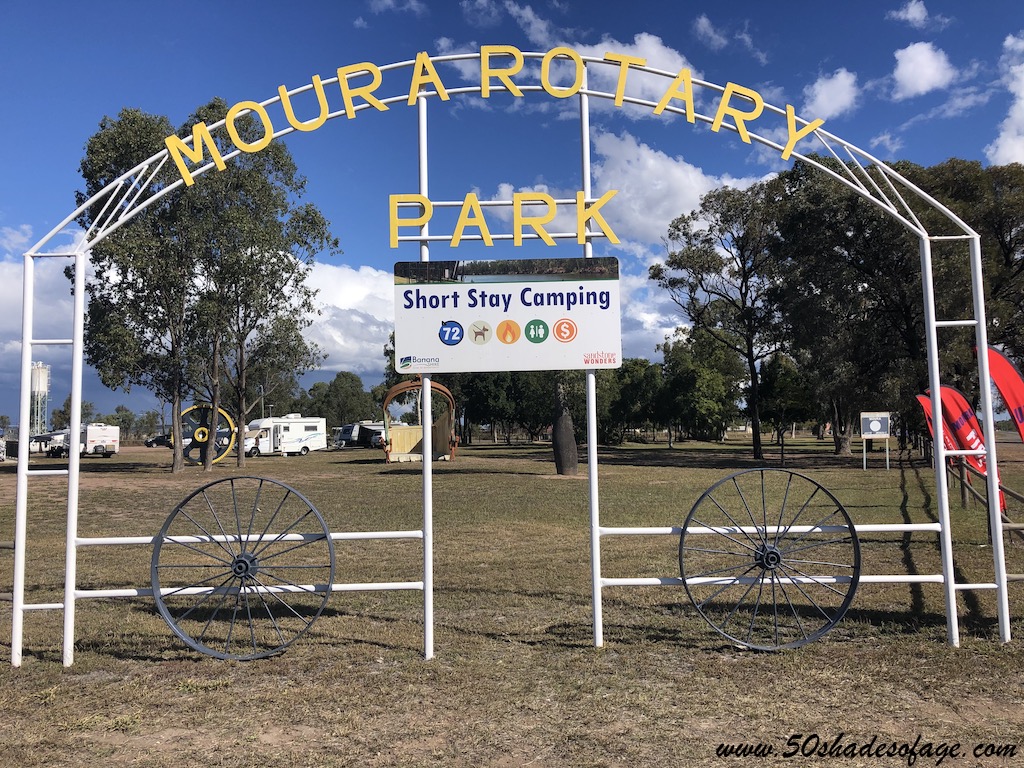
Our camping ground at Moura
Once you reach Rolleston it is a 100 kilometre drive south on the Carnarvon Highway and then a further 40 kilometre drive into Carnarvon National Park. We did the drive over two days, overnighting at Moura.
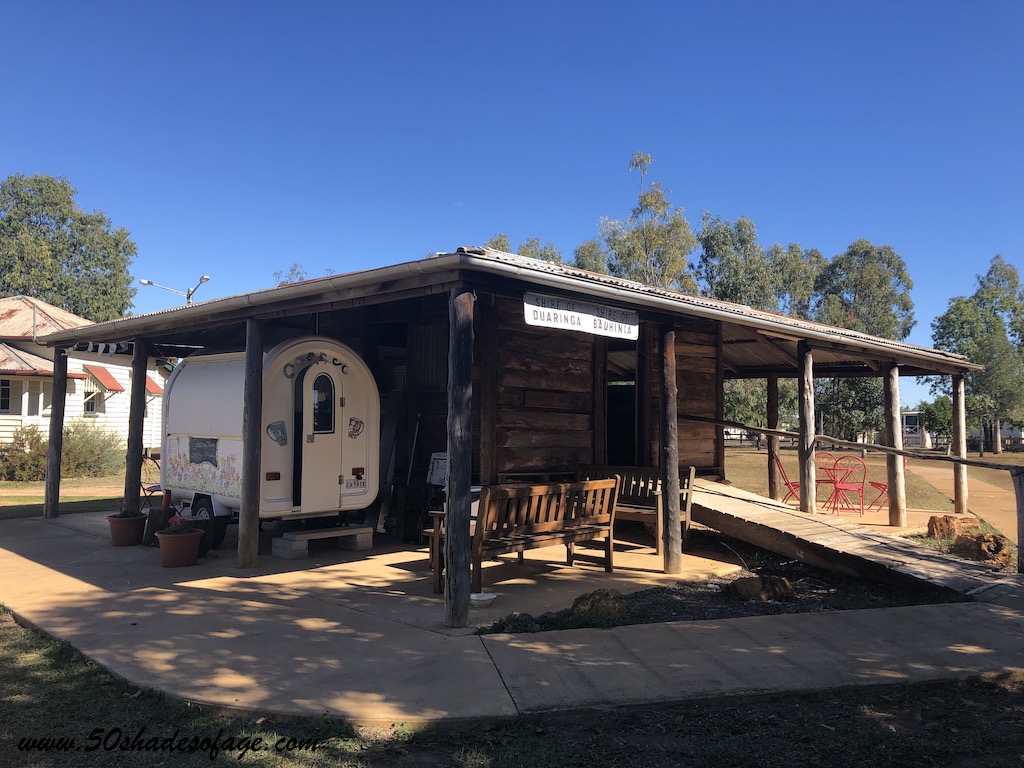
Coffee van at Rolleston Park
The road into Carnarvon Gorge is through large cattle stations (complete with horse-riding cowboys). The narrow sealed road has many cattle grids, a couple of creek crossings and a few curves and bends to negotiate. You need to watch out for cattle grazing along the roadside and also kangaroos. Otherwise the road is suitable for all types of vehicles, even motorhomes.
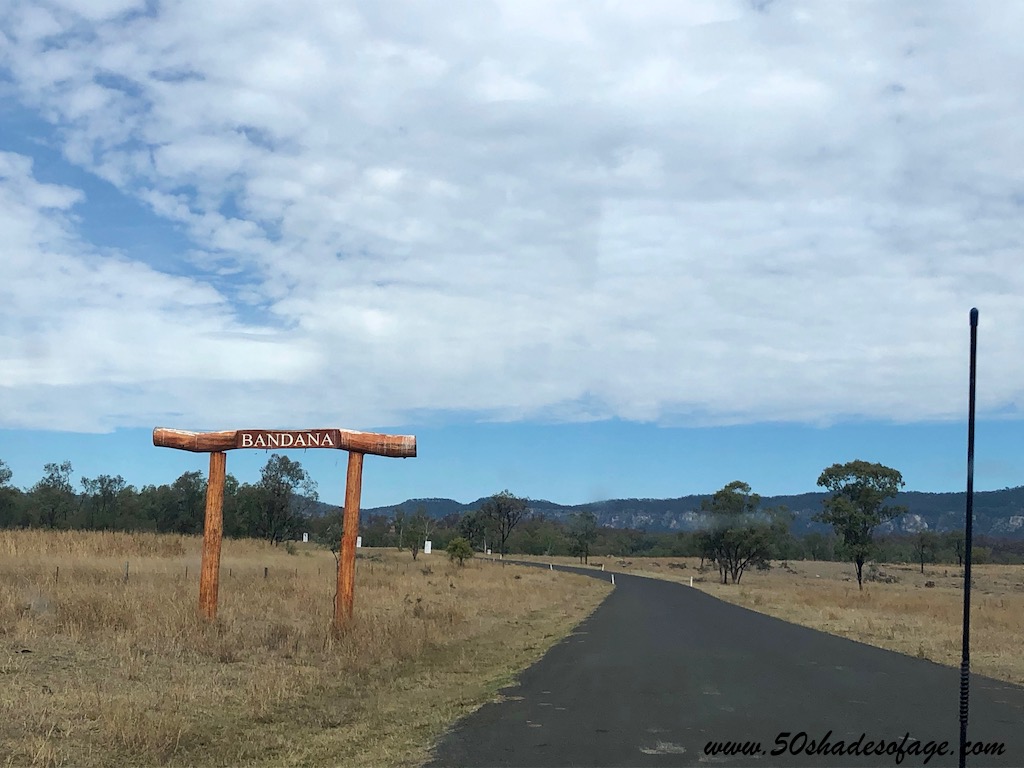
Driving through Bandana Station into the Gorge
There are a few options for camping or caravanning at Carnarvon Gorge. We decided to stay at Sandstone Park campground, offering spacious campsites that are unpowered with no water, but with exquisite views overlooking the gorge. The selling point for us was the fact that this campground is dog friendly so we were able to take our dog along.
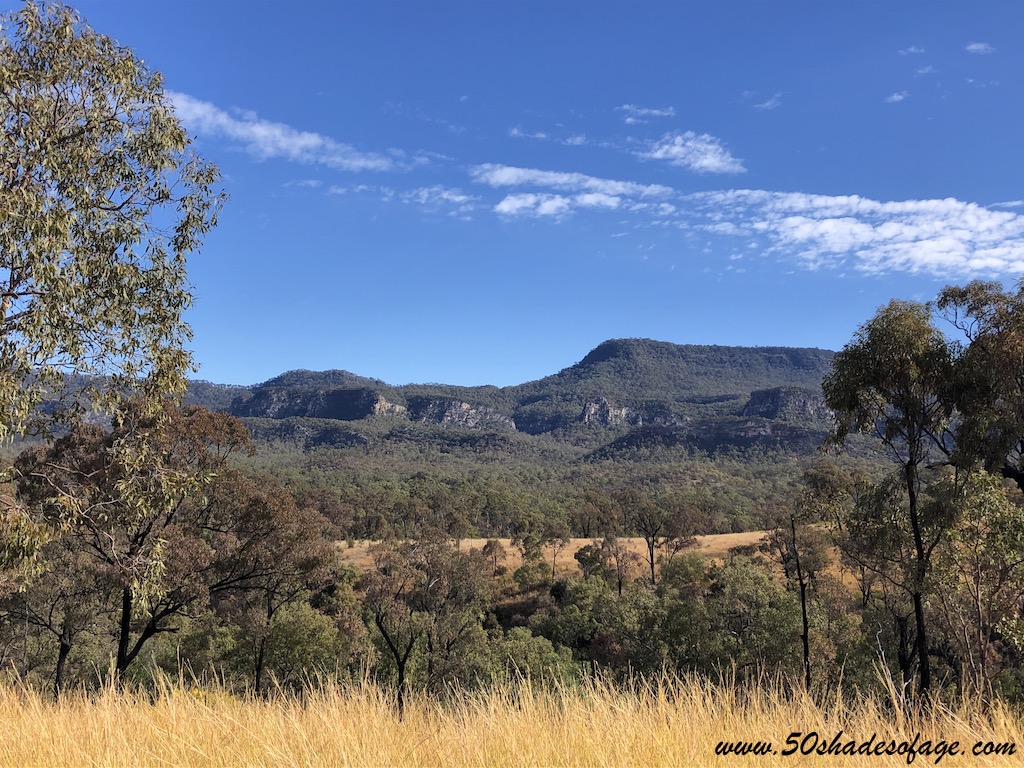
View from Sandstone Park campground

More views from Sandstone Park
Sandstone Park is situated in an enviable position high on a ridge overlooking the gorge. There are very clean and well maintained portable toilets available, fire pits for camp fires, firewood available for purchase and also drinking water. Whilst you’re out exploring the gorge you can leave your dog in the kennels for a small charge.
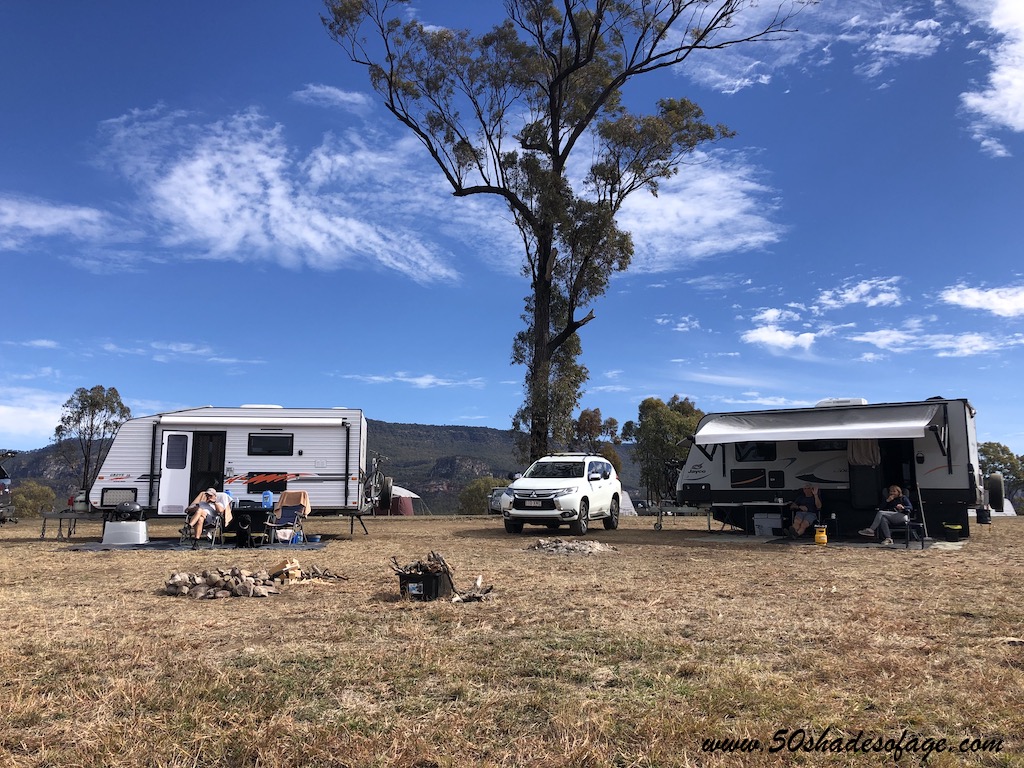
Our large campsite at Sandstone Park

Our friendly visitors at our campsite
We actually shared a campsite with friends and there was plenty of room. We had cute little kangaroo visitors each day that were feeding on the long grass surrounding the campground. I thoroughly enjoyed the rustic rural feel of the campground.
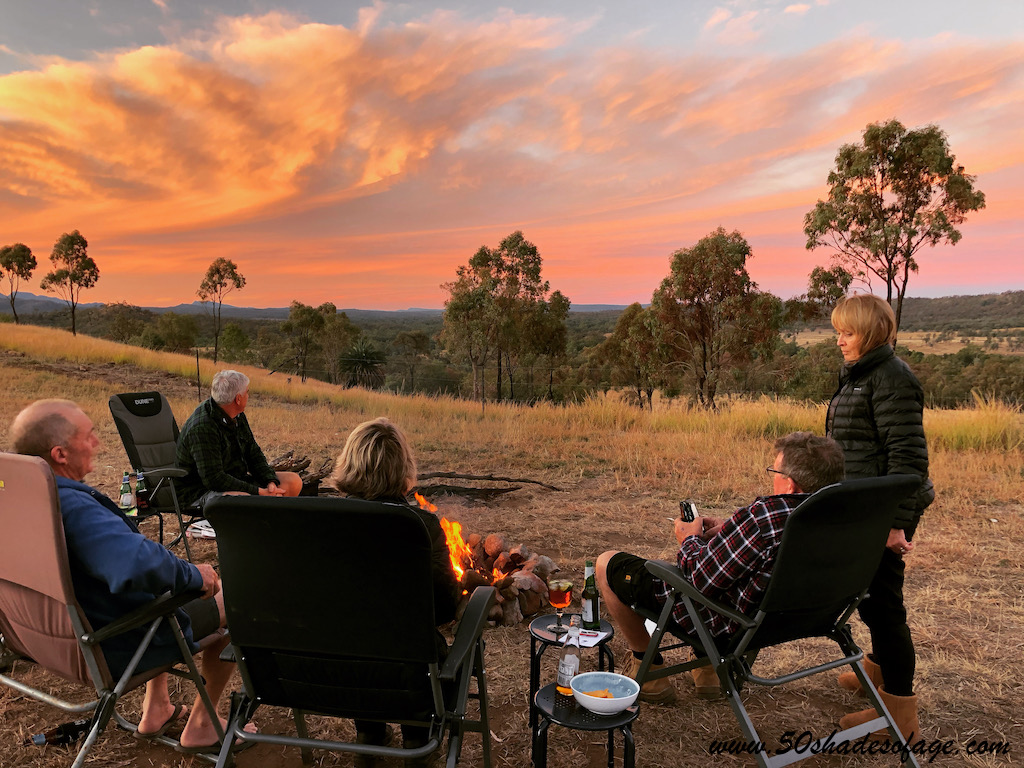
Campfire and sunset from our campsite
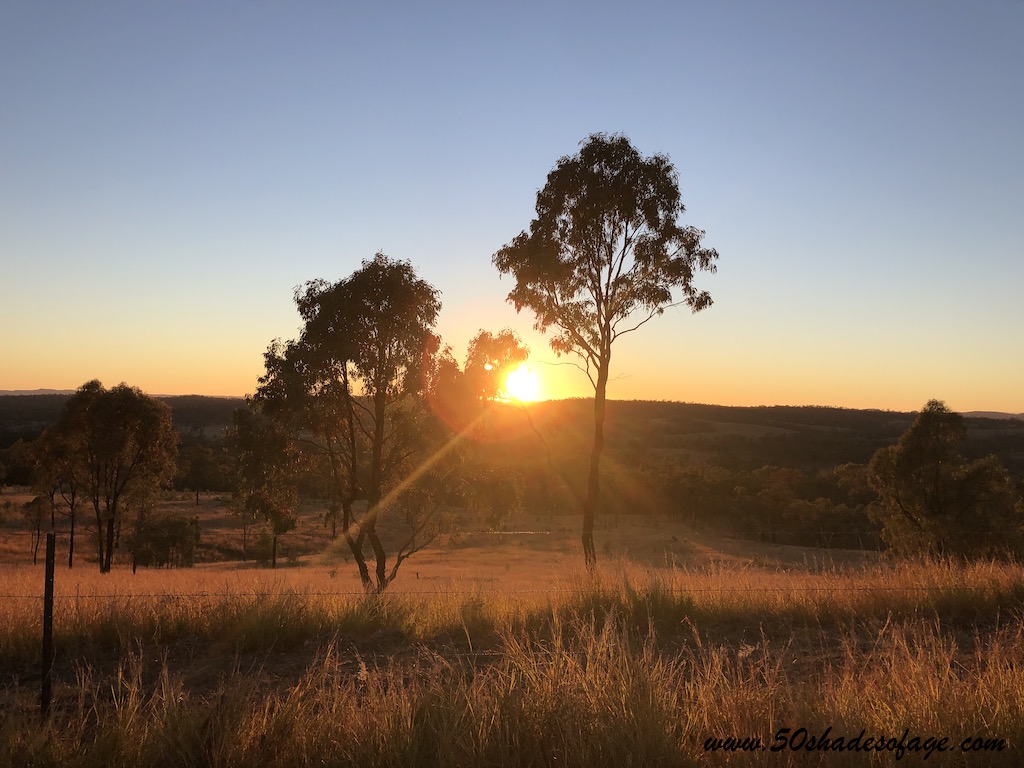
Sunrise the next morning at our campsite
The entrance and visitor area to the gorge was an easy 5 kilometre drive from the campground. At the visitor area there are plenty of amenities such as toilets, an information centre, maps, interpretive signs, picnic facilities, BBQ and a lovely shady lawn area with resident kangaroos. We discovered that it was a great spot to relax either before or after our hike.
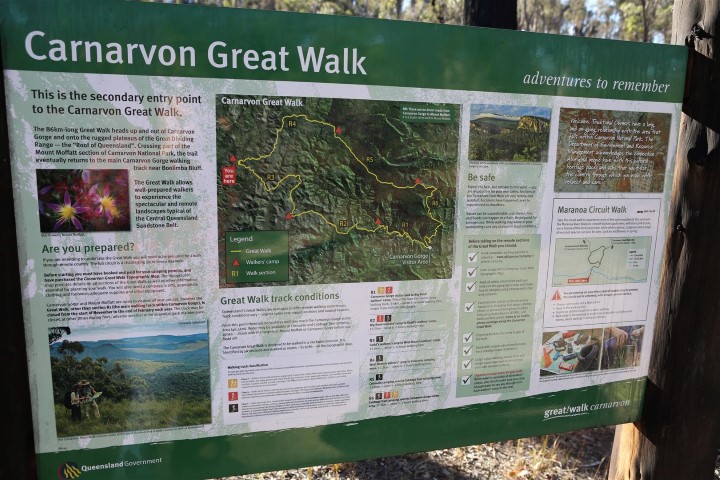
Sign with information on walks in the gorge
After we grabbed a map we decided to embark on our hike to as far as the Art Gallery, a 10.8 kilometre return walk. The gorge is extremely easy to navigate with signed tracks throughout.
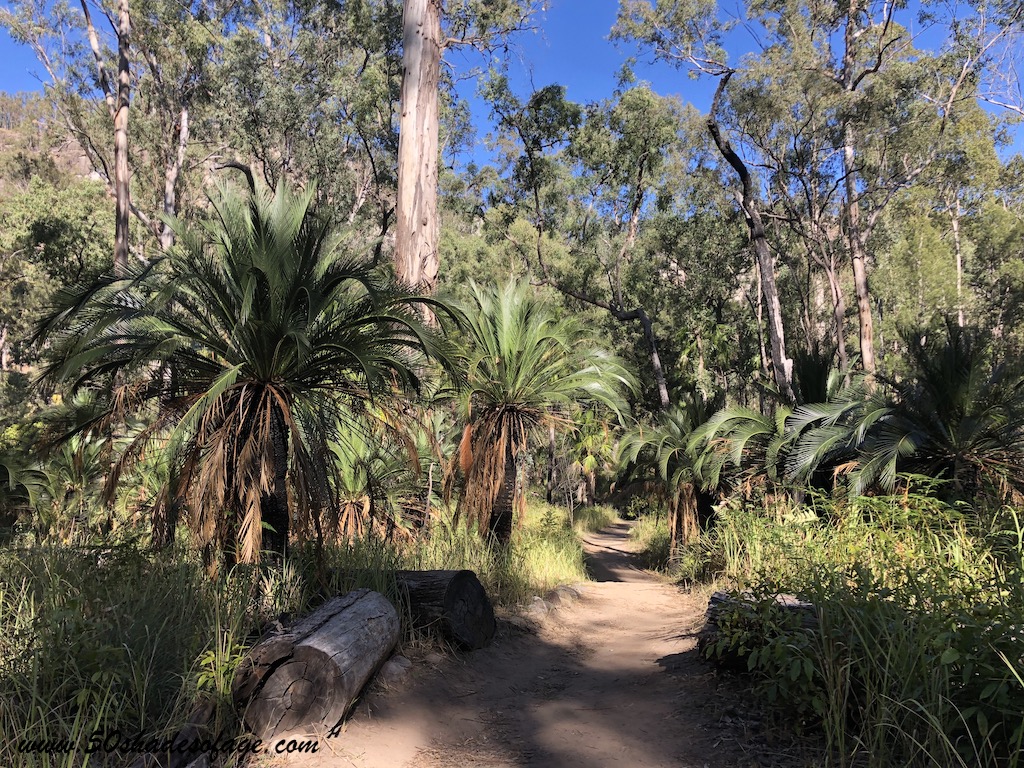
The path at the start of the gorge walk
For a large part of the hike we walked along the trickling creek that runs along the gorge. It was a stunning walk and I lost count of how many times we criss-crossed the creek upon strategically placed stepping stones.
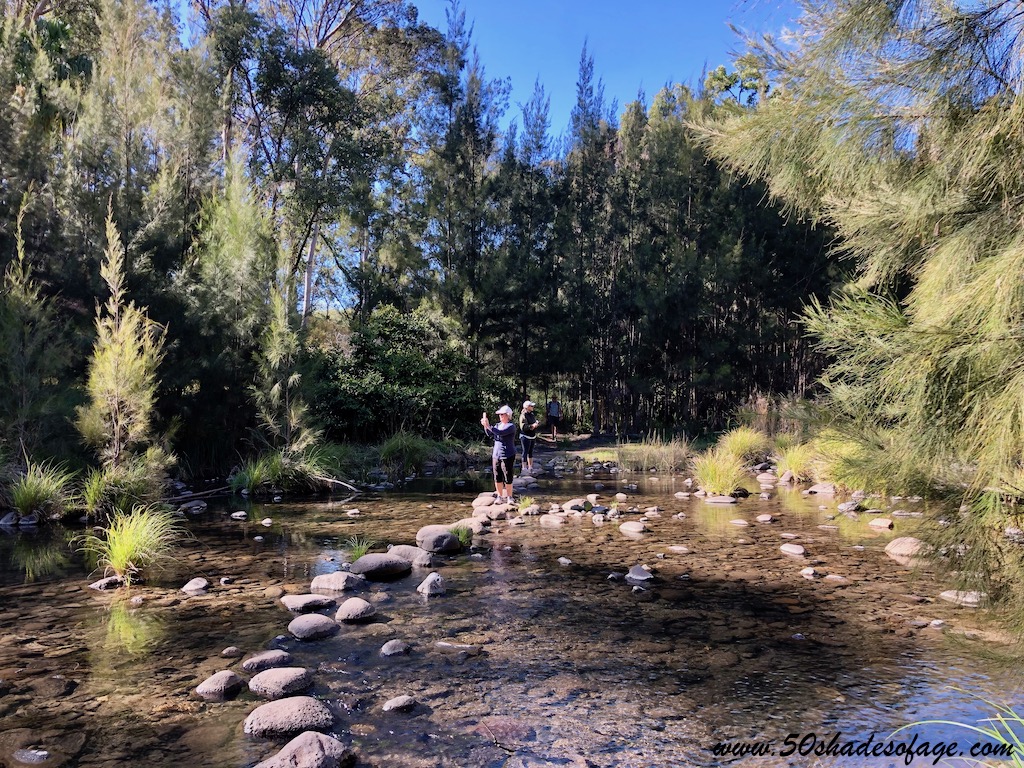
Creek crossing in the gorge
Walking along the bottom of the gorge we were surrounded by towering sandstone walls and verdant green vegetation consisting of tree ferns, palms and spotted gums. It was absolutely awe-inspiring.
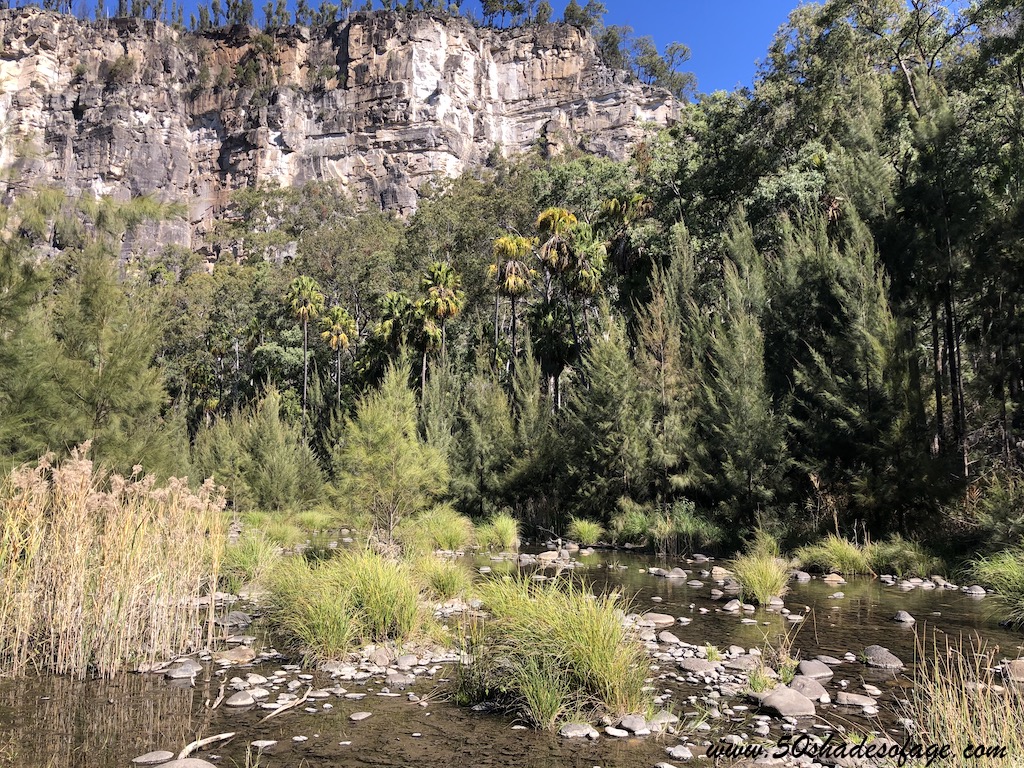
View of the sandstone walls of the gorge
We took our time resting on log seating scattered on the hiking trail, sipping on our water bottles and snacking on pre-prepared food. Once we reached the Art Gallery it didn’t even really feel as though we’d been hiking for almost 1.5 hours – a testament to how enjoyable the walk was!

Hiking up to the Art Gallery
On our return walk we ventured off the main walking trail into some of the points of interest in the gorge. These consisted of the Art Gallery, Wards Canyon, the Amphitheatre and the Moss Garden. This added on another 4 kilometres onto our total hike for the day, but it was fully worth it!
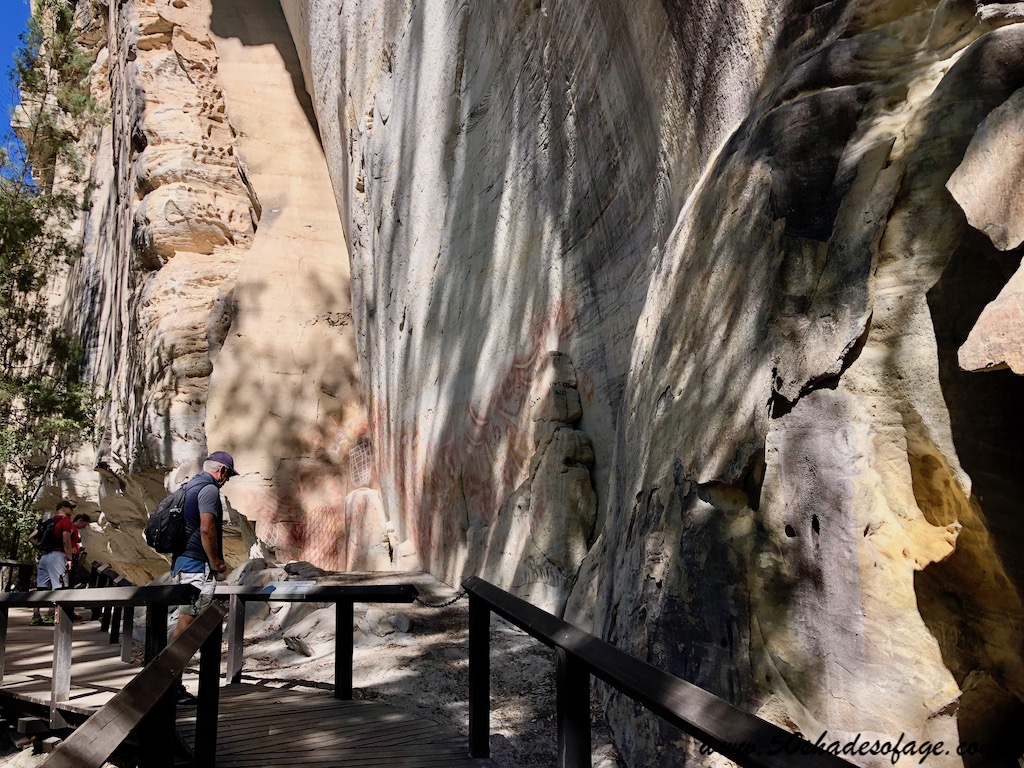
Walkway into the Art Gallery
Depending on your fitness level and time constraints, there are a great variety of walking trails at Carnarvon Gorge. All walking trails are graded from 3 to 5, with 3 being the least difficult. They are also well signed and described so that you know exactly where to go and what to expect.
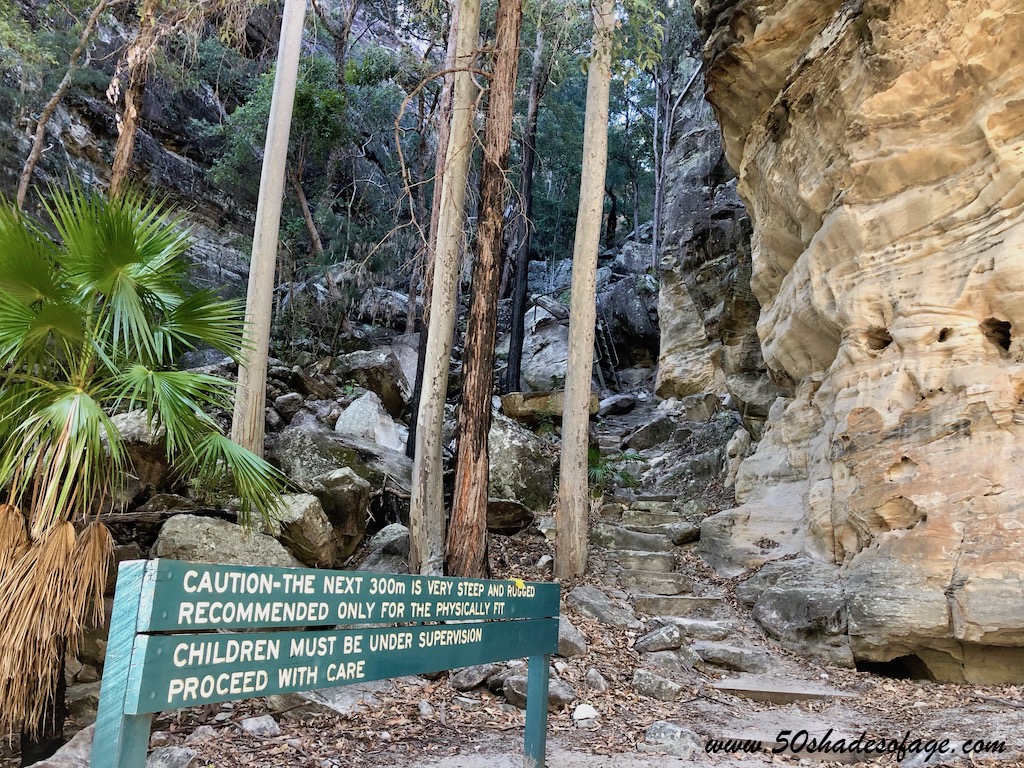
Signage at the entrance to the Boolimbah Bluff walk
During our first day of hiking we experienced the following walks:
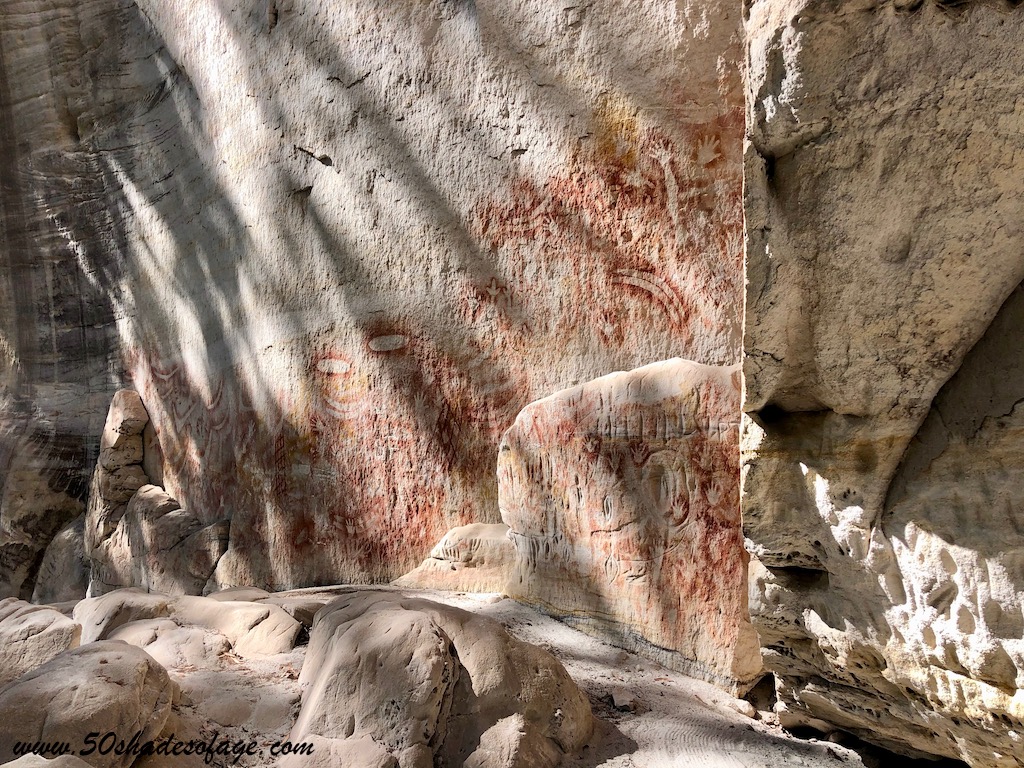
Art Gallery Aboriginal Rock Art
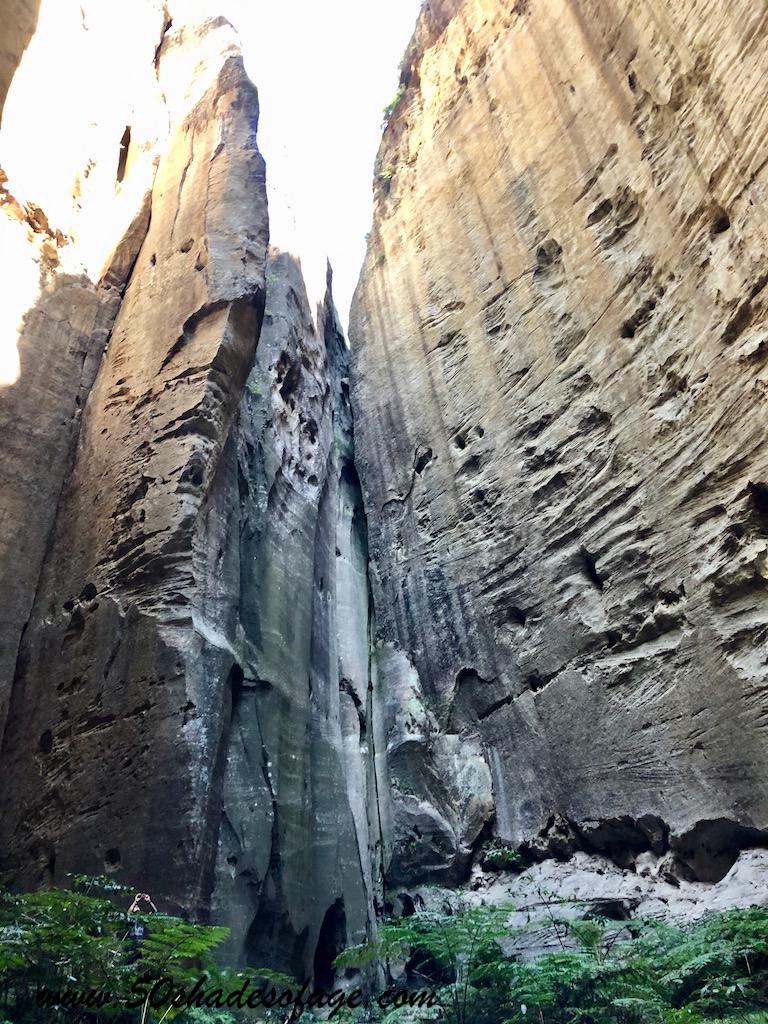
The amazing Amphitheatre
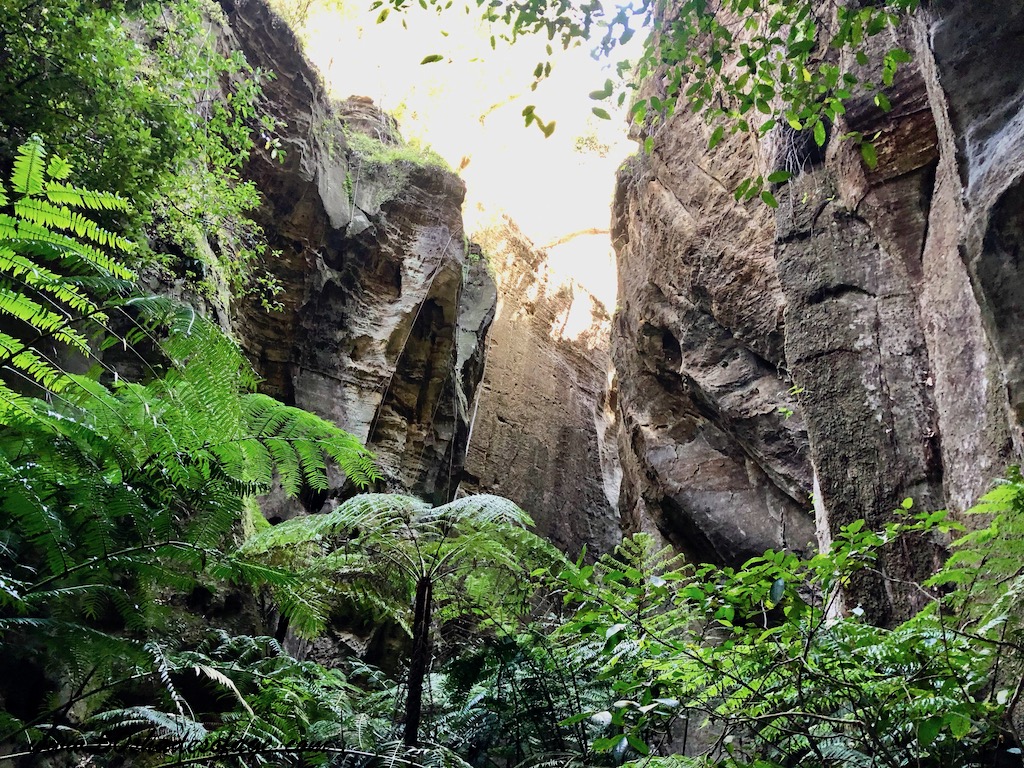
Verdant green tree ferns in Wards Canyon

The Moss Garden in Carnarvon Gorge
On our second day we backed it up with a second more challenging walk to Boolimba Bluff (grade 4 walk). After a short walk along the main gorge we wound our way up to the top of the sandstone escarpment and scaled 300 metres of steep rocky steps and metal ladders to the “roof of Queensland”.

Beautiful white sandstone cave on the walk to Boolimbah Bluff
It was a gruelling climb scrambling up hundreds of rocky steps, but fully worthwhile once we hit the top at a height of 200 metres. We were rewarded with magnificent views over the gorge out into the distant ranges from two different viewing platforms.

Views over the roof of Queensland from Boolimbah Bluff
Now if you’re not up for long walks there are a number of short easy walks (grade 3) available as well:
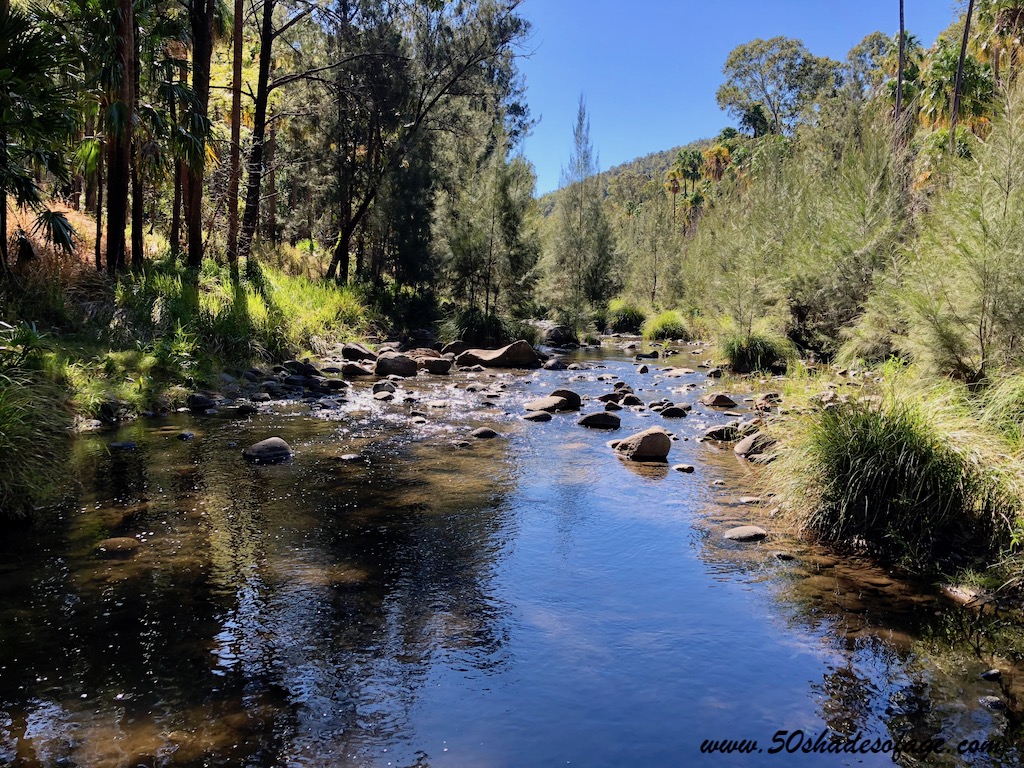
It’s a lovely walk along Carnarvon Creek
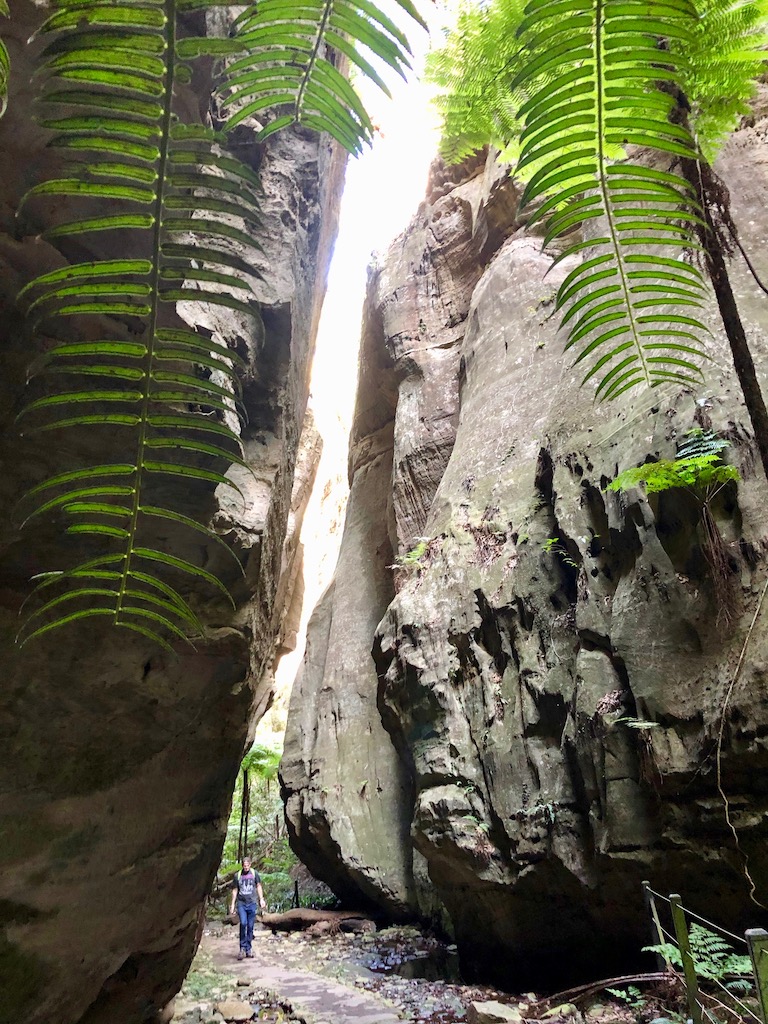
One of the side gorges off the main gorge

Carnarvon Gorge Rockpool is perfect for a dip on a hot day
For the serious hikers there are plenty of options for some longer walks and even spots where you can camp overnight. The main gorge walking track takes you to Big Bend, that is 9.7 km distance. Once you reach here the Carnarvon Gorge Great Walk begins which is more remote and rugged, consisting of 87 km of sandstone wilderness that takes 6 to 7 days to complete.
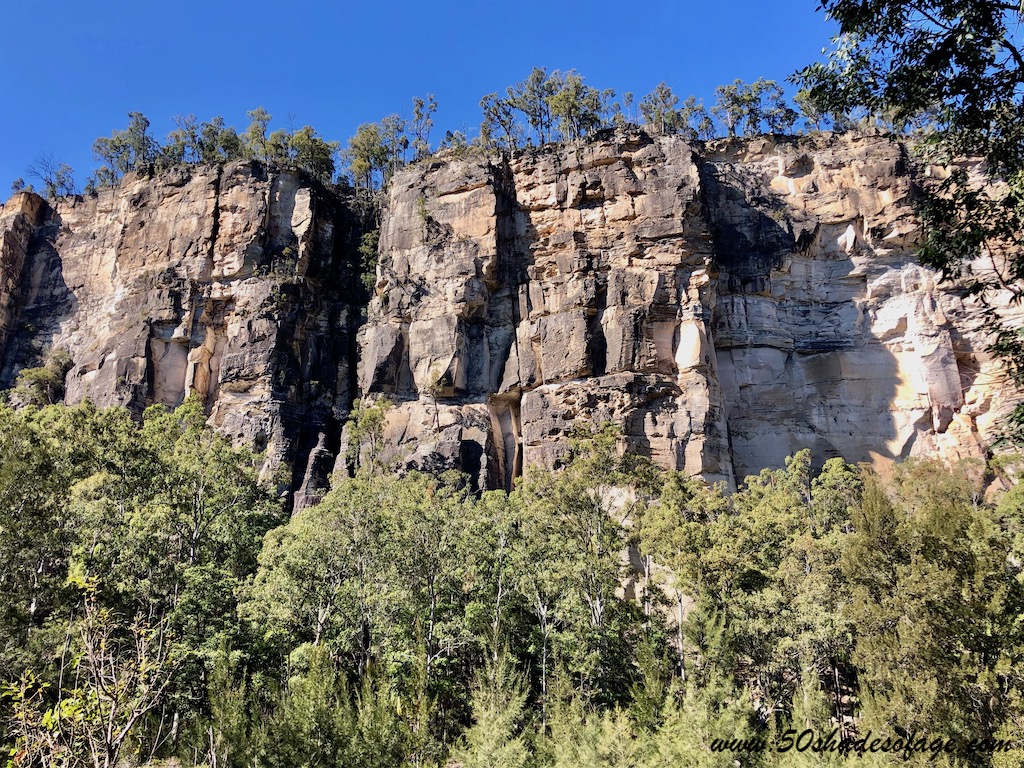
The rocky sandstone escarpments in the gorge
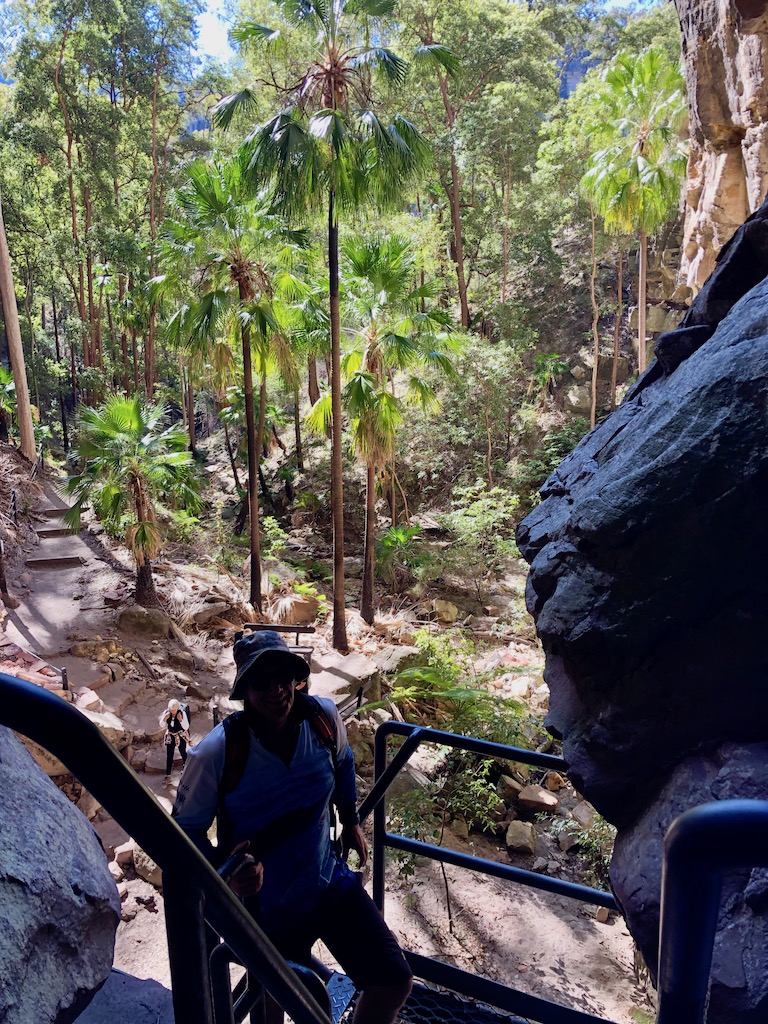
Hiking in the gorge amongst beautiful palms
A great way to experience the wonder of the gorge is upon a scenic helicopter flight over the Moolayember section of Carnarvon National Park with Heli-Central.
Otherwise take a guided tour with an experienced tour guide on either a lower gorge explorer tour, off the beaten track tour or a night safari tour. Australian Nature Guides have years of experience and a vast knowledge of the history and geography of Carnarvon Gorge.

Guided tours of the gorge are a good idea for novice hikers
There are a couple of alternatives when it comes to staying at Carnarvon Gorge. There are the safari-style timber and canvas cabins at Carnarvon Gorge Wilderness Lodge. The 30 cabins are located just outside the national park and are set amongst natural bushland each having all the mod cons and a shady verandah. The onsite restaurant is open daily from March to October for breakfast lunch and dinner. During November to February the Restaurant is closed, however there is communal cooking areas available to self cater.

One of the cabins at Carnarvon Gorge Wilderness Lodge
Takarakka Bush Resort provides self contained cabin accommodation, safari tents, caravan or camping sites, surrounded by 100 acres of picturesque natural terrain. The resort boasts information sessions, tours, entertainment, meals, the famous Bush Bar, a well-stocked general store including souvenirs, beer and wine, plus excellent facilities. All this is only a short driving distance from the gorge walking trails.

Campsites at Takarakka Bush Resort
Our three days at Carnarvon Gorge was not really long enough but we did make the most of our time here. What I loved most about it were our early evenings around the campfire watching the sunset over the gorge and the clear starry night skies above us. It was pure bliss! But also the hiking in the gorge was remarkable and comparable to some of the gorges I have hiked in Western Australia. Make sure you put this gem on your bucket list.
Kathy was a 50 something year old when she started up this blog 6 years ago, but has since turned over another decade and is now in her early 60s. She is married with two adult children and lives on the Tweed Coast of New South Wales, Australia. Kathy enjoys living life to the fullest and loves to keep fit and active by maintaining a healthy diet and exercising regularly. Some of her interests include reading, photography, travelling, cooking and blogging! Kathy works part-time as a freelance writer but her real passion is travelling and photographing brilliant destinations both within Australia and overseas and writing about it.

